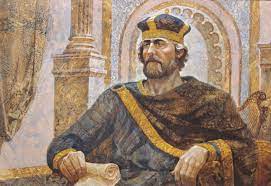The Superiority of the Son in His Person and Work
1:1 to 10:18
The first readers of Hebrews were part of a community whose recent history and experiences had been tragically discouraging. Following Isra’el’s captivity in Babylon, hopes were revived for the return of the visible manifestation of God. Yet, the prophecies of Haggai and Zechariah regarding the return of the Sh’khinah glory, to rebuild the Temple had not been realized. Five centuries of frustration followed.
In the generation preceding Yeshua’s day, revolts and other bloodshed took the lives of more than 100,000 Jews. In 31 BC, an earthquake had killed another 30,000. Severe famine and pestilence also took their toll. Herod the Great bled the land mercilessly with unrelenting taxation, a blight that continued long after his death. Messages of hope were rarely heard; despair was everywhere. The average person felt the hopelessness of the times and longed for relief, something to buoy the spirit.
In this depressing situation the writer of Hebrews urged his readers to look at Messiah quite differently from the usual way, as the coming Liberator.

The most prominent Jewish expectation associated with Messiah was the exaltation of the Davidic throne. This would be accompanied by a golden age of peace and joy. No rabbi anticipated the magnitude of His glory as it is seen in 1:1 to 10:18. The commonly held Jewish views of Messiah required radical revision. He is no monarch, not even a super-David, but a being of awe-inspiring nature. God had identified with a man by becoming a man. In Him and through Him, YHVH had spoken most conclusively and completely. Nothing remained to be said, for the Son is the radiance of the Sh’khinah glory and the very image of God’s essence (1:3 CJB). When Jewish people speak of the glory of God they use the word kavod. The word conveys the idea of heaviness. In our time, concepts of the LORD are characterized by a kind of weightlessness. You hear it in the songs and prayers, the attitudes of people. But for Isra’el, God’s weightiness is seen in all that He is and all that He does.
The glory that Isra’el witnessed on Sinai (Exodus 24:16) also filled all of God’s world (Isaiah 6:3). Now that same kavod, revealed in Messiah could be known by all who trusted in His saving work on the cross. The writer of Hebrews wanted to strengthen the followers of Yeshua by helping them focus on the superiority of the Son in His Person and His work. It is impossible to estimate the importance of this truth to those Jewish believers who received this letter. Branded mesbumadim (traitors to Isra’el’s faith), they were subject to enormous pressures. Then, as now, faith in Jesus comes at a price. You cannot be a believer without suffering at the hands of the world. Therefore, the rejection of family and friends needed to be offset by the love and full acceptance they received from ADONAI’s eternal Messiah, the God-Man, and sustainer of all things.11
There were three pillars of Judaism in the days when Hebrews was written: angels, Moses, and the Levitical Priesthood. The writer will deal with each one separately: first the angels (1:4 to 2:18), then with Moshe (3:1-6), and finally the Levitical Priesthood (4:14 to 10:18).



Leave A Comment